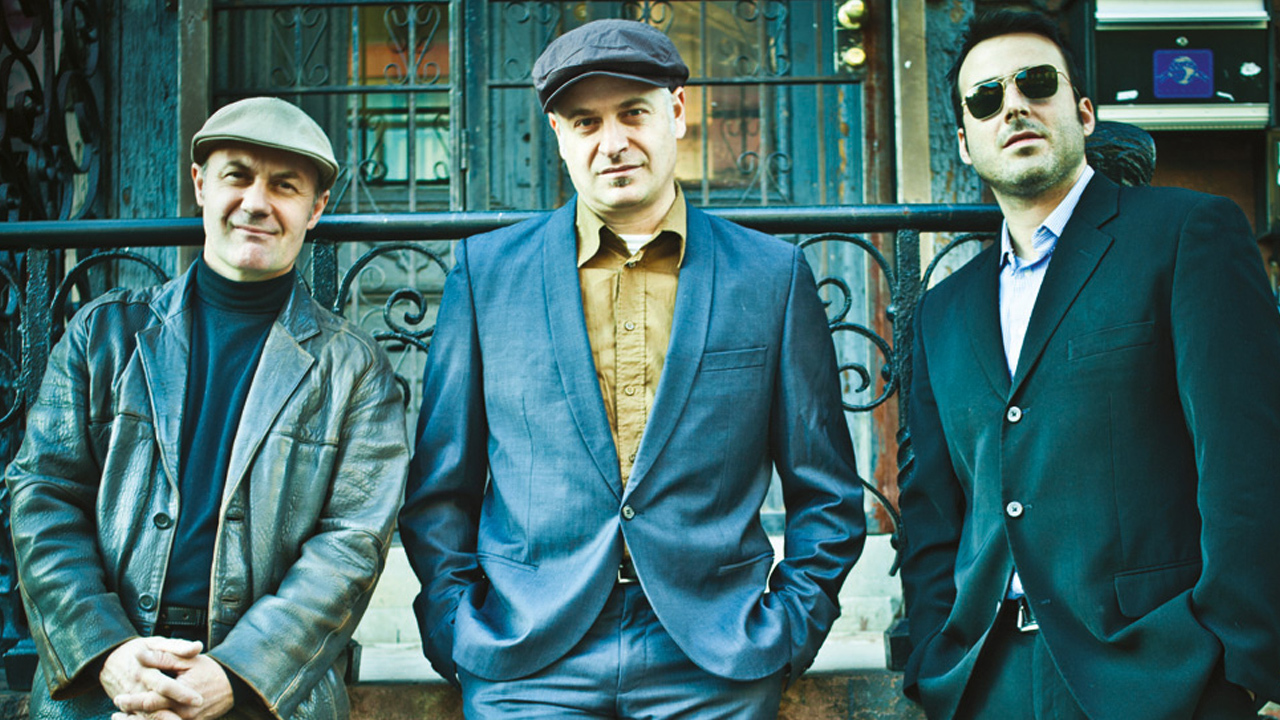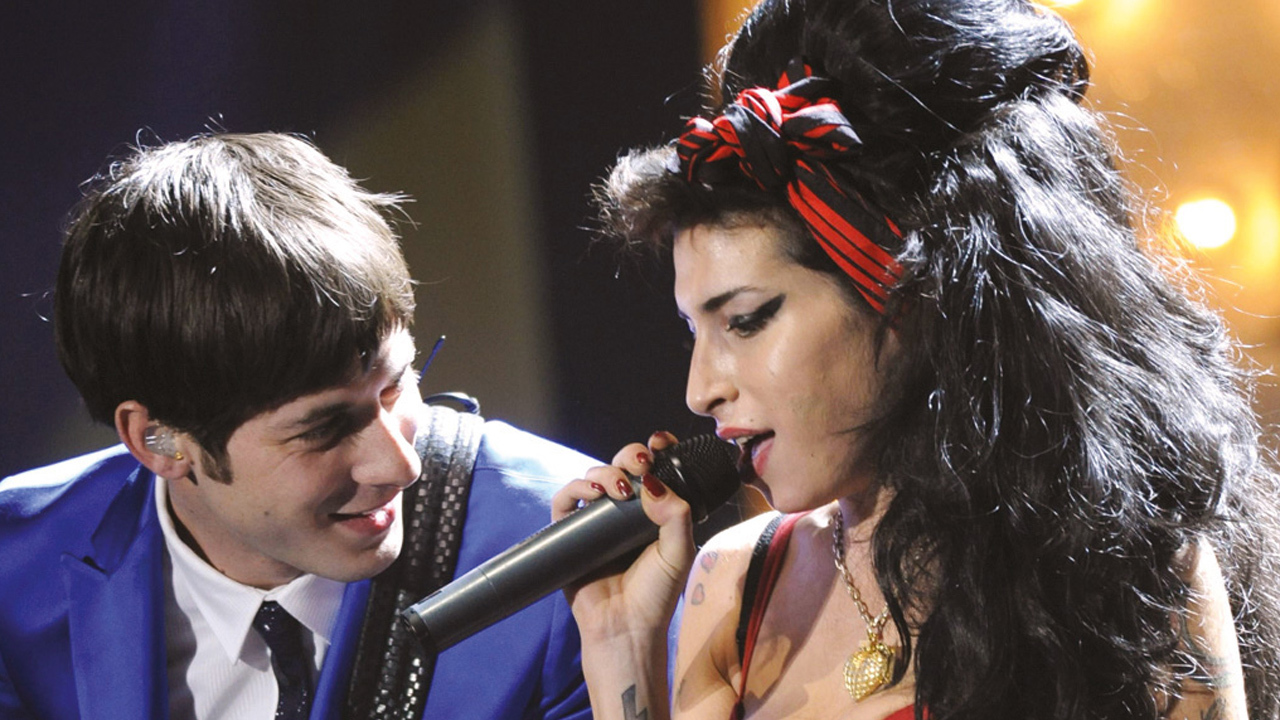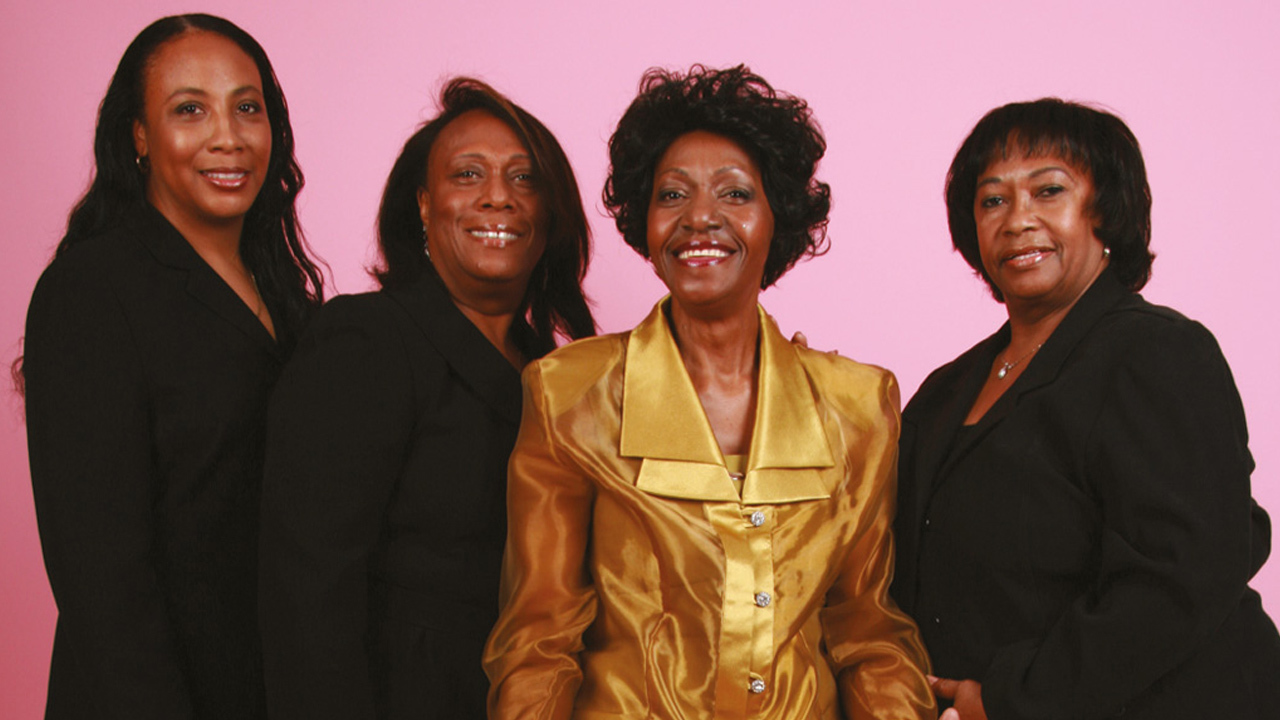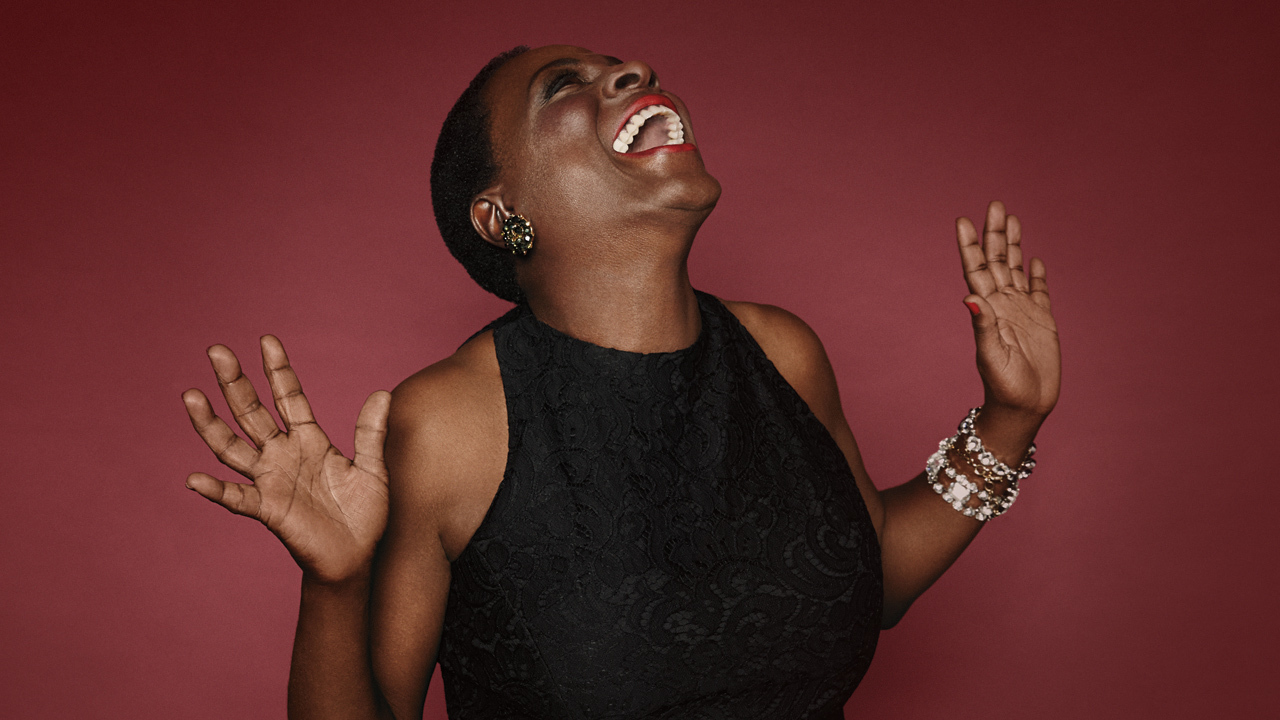The first time Gabe Roth, the co-founder of Daptone Records, came across Sharon Jones was when he was recording soul singer Lee Fields’ Let A Man Do What He Wanna Do 45 for his Desco label, which was the precursor label to Daptone. “We needed three female background singers,” he tells The Blues from Daptone’s House Of Soul studios in the Bushwick neighbourhood of Brooklyn, New York. “Joe, the sax player in the band, he said his girlfriend Sharon could sing and she could bring two of her friends along. Well, she turned up on her own, did all the harmony parts and blew us away. Her voice was amazing and by the end of the session we’d made a record with Sharon as well.”
Roth has come a long way since Desco, his first record label. The bassist, songwriter, engineer and producer masterminded the renowned Daptone in 2001 with his friend Neal Sugarman, becoming a chief architect for 21st century soul, funk, gospel and blues with a great roster that includes Naomi Shelton And The Gospel Queens, Charles Bradley, the Menahan Street Band, The Budos Band and Sharon Jones & The Dap-Kings. The Dap-Kings, the label’s in-house band, who Roth plays bass for, have become the go-to backing band, a modern day Swampers, and they most famously appeared on Amy Winehouse’s 2006 album Back To Black but have since worked with everyone from Robbie Williams and Boyz II Men to Michael Bublé, David Byrne and St Vincent.
Roth was raised in Riverside, California. His parents were lawyers and music fans. “The radio was always on and they had records – I grew up with Aretha Franklin, James Brown, The Beatles and the Stones.” He says he never wanted to be a musician or music mogul: “Sometimes you hear a great record and it makes it more intimidating.” Instead, he went to New York University, hoping to become a maths teacher after graduation. He played drums and switched to bass when he couldn’t find a bassist for his college band. He also decided to major in music. “It looked like the most fun and interesting course. I learned about acoustics, music theory, music history, engineering.”
Through a friend there, he met Phillip Lehman, who ran Pure Records, a hip, independent funk reissue label. “He said he wanted to make new, raw funk records. He was crazy enough to try anything and we started making 45s with my band, The Soul Providers.”
They called the imprint Desco.
“We weren’t a part of the industry,” says Roth. “We didn’t sit down and say, ‘Let’s start a business!’ We were just making records in basements and bedrooms and then we’d get in Phillip’s Jeep and drive to a store in New York or Philadelphia and try and sell them. We didn’t take it seriously. We didn’t feel like we needed to follow any music industry protocol – we just did it our way. We didn’t have a publicist. If people wanted the records, they bought them.”
The UK’s deep funk scene was an early champion. “[DJs] Keb Darge and Snowboy played our records at their parties. That gave us a foothold, and then the next thing you know, we’re a real record company.”
The first time Roth felt he was making a real record was with Lee Fields. The Wilson, North Carolina singer had made his debut with a cover of James Brown’s Bewildered in 1969 as a 17-year-old. Dubbed ‘Little JB’, he went on to record a series of underground funk 45s, which earned him cult hero status.
“We were recording a track with The Soul Providers,” Roth takes up the story, “and we needed a singer. We were in Phillip’s Jeep listening to a mixtape. A Lee Fields song came on and he said, ‘Wouldn’t it be great if we got Lee Fields to sing on the record?’ He didn’t see why we couldn’t, even though we had no idea where he was, but he tracked him down. Remember, this was before the internet – he couldn’t just type his name into a search engine. He contacted the BMI, did some research, and it turned out he was in New Jersey. We called him up, he came down, we gave him some cash and he sang. By the end of the first day, we had Let A Man Do What He Wanna Do and Steam Train and we put them on a 45. Roth and Lehman had a real coup, but initially no one was interested.
“We went round the record stores, but no one wanted copies because we said it was a new record. So we rubbed some newspaper on the label so it looked old and instead of trying to sell them as new for three dollars each, we went in with just one record and played it to them. We told them it was old and sold it to them for 30, 40 dollars a pop. There weren’t people making rough-sounding soul and funk records then. People into that music weren’t buying new music.
“The first album we did with The Soul Providers was The Revenge Of Mister Mopoji, a fake kung fu soundtrack. We said it was a reissue and people went crazy and it sold thousands. But then with the second Soul Providers record, because we said it was new, we couldn’t give them away, yet it had Lee and Sharon on it and it was a better record. We were like, ‘Fuck ’em, if they want lies, we’ll give them lies.’ So we assembled The Daktaris and made a record. Everyone thought it was some old Nigerian record but it was just us and our friends in an old heavy metal studio. We also did a fake library record, and it wasn’t until we got a certain size following that we could start selling records as new, like with The Sugarman 3.”
The Sugarman 3, a boogaloo funk trio, are led by saxophonist Neal Sugarman, with the line-up completed by organist Adam Scone and drummer Rudy Albin. From Boston, Sugarman’s father was “a huge jazz fan with a big record collection that we used to listen to all the time,” Sugarman says. In junior high school he started playing the sax, and during the 80s he became a part of the local punk-rock scene, playing in Boys Life, who released several 45s and opened for Stiff Little Fingers, The Jam and Echo & The Bunnymen in New York.
“What stuck with me from that scene,” Neal Sugarman says today, “is the camaraderie, the DIY culture, the supporting of each other. It was a real independent scene. Everything that Daptone stands for came out of that scene.”
In 1991 Sugarman graduated from Berklee College Of Music, and by this time, he was consumed by blues, jazz, R&B, soul and funk. “I was listening to Gene Ammons, Stanley Turrentine, Eddie ‘Lockjaw’ Davis, King Curtis, Junior Walker, and I craved a jazz scene like the punk scene, with bands that liked and supported each other. I played in New York, went to New Orleans, anywhere I could play and avoid getting a day job. And then I came across Gabe and suddenly discovered there was a scene happening. There was Adrian Gibson running the Jazz Café in London, Pete Isaac running the Jelly Jazz in Plymouth, The Yardbird Suite in Leeds, and I felt I’d come full circle. Gabe said, ‘When can we record a record?’ It was that immediate. We started hanging out all the time and it turned out that Gabe was building a studio in the basement of the building where the Sugarman 3 organist lived.”
“Neal sent us a cassette tape of demos, which was real cool,” remembers Roth. “So we went to hear him play and we decided to make a record with him. He’s a great sax player, and at that time there were so many techy jazz guys playing and it was just great to hear someone play so soulfully. He played that blues sax with feeling.” Desco put out their 1998 first album, Sugar’s Boogaloo, and 2000’s follow-up Soul Donkey and a friendship developed. “We started turning each other on to records we knew each other would like,” says Roth, “and it grew from there.” By the time of The Sugarman 3’s third record, Pure Cane Sugar, though, Roth and Lehman had called time on Desco. “Lehman had lost interest,” says Roth. “We fell out.”

Above: The Sugarman 3.
It was bad timing. Roth had just finished recording Sharon Jones And The Soul Providers’ first album Dap Dippin’, and without Desco to release it, it was in need of a label. When his and Sugarman’s searching yielded nothing, Sugarman suggested they start a label together. “It was the last thing I wanted to do but it made sense,” says Roth. “So we set up Daptone to put out the Sharon Jones record and the Sugarman 3 record.
“I trusted Gabe, believed in his vision, his talent, his production, and I wanted to continue releasing Sugarman 3 records with him,” says Sugarman. “And Desco folded at the height of its popularity, so with Daptone, we had a list of distributors already to call on; we had a head start as a new label.”
Initially they worked out of Sugarman’s spare room, then they moved headquarters and studio to a brownstone in Bushwick, Brooklyn. Old car tyres and clothing were used to soundproof a booth. Charles Bradley did the plumbing, Sharon Jones ran the electricity – “It really is an artist-run label,” says Sugarman. “Charles taught me how to drywall.”
And so Daptone was born. The Soul Providers became The Dap-Kings and Sharon Jones became the label’s flagship artist with the issue of Dap Dippin’ in 2002. “Gabe let me be myself,” Jones told us last year of why she wanted to be involved with Daptone. “I always wanted to sing but, you know, I’d audition for jobs and they’d say, ‘You’re too short, too fat, too something,’ and once I was over 25, ‘Too old.’ The opportunities just weren’t there until Gabe came along.”
“Sharon had, and still has, an unbelievable voice, but it goes beyond her voice,” says Roth of why he wanted her involved with Daptone. “It’s really about who she is. She’s really not like anyone else. She’s short but she comes across like the tallest person you ever met. She’s like a fireball, full of energy. It’s very real with her, and when she hits the stage she comes out with so much soul and desire to connect with people. She’s singing from her gut. She immediately draws people in.
“There’s so much rapture and she’ll be driving the room into a frenzy and some of that comes from the church, that taking her shoes off and shouting and stomping. And also some comes from being a wedding singer. She has a way of approaching people, of making them feel involved. When we played smaller venues, she got down off the stage and got into the audience. Now we play larger venues, she gets people up on the stage – she makes people feel like she’s invited them round to hers for a house party.”
The Dap Dippin’ album track Give Me A Chance brought Jones and the band to the attention of DJ Mark Ronson. He sampled it on the title track on his 2003 debut album Here Comes The Fuzz. When he then needed a band to back Amy Winehouse on her 2006 Back To Black album, he gave The Dap-Kings a call, and they backed her on six tracks, including Rehab and You Know I’m No Good. Winehouse then requested their services on her 12-date US tour.

Above: Mark Ronson and Amy Winehouse, live at The Brits, 2008.
Binky Griptite, The Dap-Kings’ guitarist and master of ceremonies, was in the studio and on the road with Amy Winehouse. Involved with Roth from the beginning of Desco, playing in The Soul Providers and remaining as they morphed into The Dap-Kings, he’s the perfect mesh of James Brown’s emcee Danny Ray and a gospel preacher. “My father was a Baptist preacher so I guess I get it naturally,” he says. He’s a neat rhythm guitarist too.
He remembers Amy Winehouse: “On the one hand there’s this nice, smart, funny kid with the great voice that’s just so excited to see all of these things happening for her, you know, because she’s a fan of American soul music and she’s blown away at getting to work with an actual American soul band that takes the shit seriously. But then I see the other side of the business, the paparazzi and the gossip websites and all of this other stuff, and it was so alien to what The Dap-Kings had experienced previously. It was a great insight into the major label and major media world.
“It’s important to remember that she was on a label that was owned by a company that also owned TV networks and magazines. That means a lot of those pics taken by the paparazzi that hounded her got bought by the same company that released the record. She was a good person though, it was great to hang out with her. And if there was barbecue on the menu, that’s what she ordered. She loved to laugh and listen to good music. So many pop stars are primarily interested in being famous but she was a true musician. She seemed to hate the fame, that was her biggest problem.”
Mark Ronson and Amy Winehouse took the Daptone sound to a global audience and big names got in touch. Some projects worked out; others, like planned albums with Rod Stewart and Syl Johnson, didn’t.
Roth and Sugarman remain unfazed by the spotlight, though, sticking to their vision “of only putting records out on Daptone that we like, by artists we have a relationship with,” says Sugarman. “One of the things about Daptone that a lot of people don’t realise is that it’s a very regional label. All the singers and musicians are local – it’s not like we’re getting a demo from this band in Texas and saying, ‘This is great, we’ll put the record out.’ It’s all about putting out records by the people we hang out with, like Naomi Shelton, Charles Bradley, Saun And Starr.”
Naomi Shelton first recorded Forty First Street Breakdown and Wind Your Clock 45s for Desco under the name Naomi Davis. The Midway, Alabama-born soul shouter had started out singing in the Mt Coney Baptist Church, then graduated to the New York club circuit in 1963, singing Otis Redding and James Brown songs at Flatbush Avenue’s The Night Cap. There she met pianist Cliff Driver and they teamed up. The pair, along with Fred Thomas – who had previously played bass with James Brown – formed a band.
In 1999 they were playing Flannery’s in Manhattan and Roth was in the audience. “At the same time that The Dap-Kings were playing with Amy Winehouse, I started working with Naomi,” says Roth. “For me, [her 2009 debut] What Have You Done, My Brother? is the much better record. Naomi Shelton can really sing.”

Above: Naomi Shelton & The Gospel Queens.
It was Cliff Driver who brought Charles Bradley to Daptone’s attention. Bradley was at that point doing James Brown covers under the name of Black Velvet. “Cliff Driver said, ‘Man you’ve got to hear this guy, he sounds just like James Brown,’” says Sugarman. “He was doing his impersonator act in Brooklyn, in these obscure clubs off the grid, but we went and heard him and he sounded great, real ghetto funk. We were recording Pure Cane Sugar, needed a vocalist so we said, ‘Let’s get Charles down to do a vocal.’ And we recorded Take It As It Come with him.”
Nine years later, they put out his debut album* No Time For Dreaming*, produced by Tom Brenneck, on Daptone imprint Dunham Records.
Brenneck had started out playing guitar in The Dap-Kings before founding the Menahan Street Band, an instrumental group who released their first album Make The Road By Walking in 2008 – its title track was sampled by Jay Z on his track Roc Boys (And The Winner Is). The Menahan Street Band also double as Bradley’s backing band.
“Tom Brenneck said, ‘I really want to make records with Charles. I want to become a producer,’” says Neal. “So we supported that relationship; we helped to grow it. We didn’t say, ‘Give us three records in four years,’ like standard record company practice. There was no pressure. We just said, ‘Go in the studio, use whatever you want.’ I remember he came to us with Make The Road By Walking with his band the Menahan Street Band, and then Charles’ The World (Is Going Up In Flames), and we were like, ‘Yeah man, you’ve hit your stride.’ And to give him ownership, we started the Dunham Records imprint for his productions.”
Saun and Starr, formerly The Dapettes, Sharon Jones’ backing singers, have also grabbed the spotlight. They first sang with Jones in the 90s as a part of her wedding band, The Good ’N Plenty Girls, then backed her on Jones and The Dap-Kings’ 2014 album Give The People What They Want. They’ve since opened on the Daptone Super Soul Revue tour and their debut single, Hot Shot/Gonna Make Time became the Daptone label’s bestselling 45 to date.
“They were two of the first songs that we recorded,” says Saun, also known as Saundra Williams. “If I’m not mistaken, we were just feeling out how releasing a 45 of us would fare, and introducing us to the world. When Starr and I think about each song, *Hot Shot *is so her and Gonna Make Time is so me, personality wise.”
“Those two tracks are electric,” adds Starr Duncan-Lowe. “Cheme Gastelum, the baritone saxophonist for the Dap-Kings, came up with the bassline for *Hot Shot *and Gabe had written the words for it over similar chords. It’s a fun, party-all-the-time, catchy tune. Then there’s the ‘mellolicious’ sounds of Gonna Make Time. That track was all Homer Steinweiss, the Dap-Kings’ drummer. He had a weird computer demo of it that sounded awesome. That song warms your soul. The two songs and our two voices really complement each other on that record.
“It was tough trying to pick which would be the A-side. In the end, I think Daptone went with Hot Shot just because the energy seemed A-side-appropriate.”
Daptone looks set to continue its expansion; its most recent signing is blues and soul singer James Hunter, while a new garage rock subsidiary, Wick, has also been established. Its first release is by the Mystery Lights, a five-piece from Brooklyn. “I heard them and thought, ‘Let’s just do it!’ says Sugarman, “which is what we’ve done right from the beginning.”
Daptone’s Six Appeal - James Hunter, of James Hunter And The Six, on why the label is solid gold for his band.
“Daptone is a great label to be signed to. For a start, the Daptone people are genuinely passionate about music and understand our take on it. Certainly it’s a business like any other, but you can’t make good stuff if you approach it as if you’re selling toothpaste: ‘Just bung some more stripes in it and change its name.’
“Also, their demographic includes people who like to stand up and jump about at gigs. Our audience has many of those too, but too often we’ve found ourselves at venues where the seats are bolted to the floor right by the stage and people who’d rather have a dance are forced to eat their dinner to us. Most importantly, perhaps, is that we’ve never had such a punchy, three-dimensional sound with any other studio as we have at Gabe Roth’s place. He knows his onions, that bloke, he really does.
“I generally have more direct contact with Gabe over Neal Sugarman. This is in equal part because Gabe as the in-house producer has a more hands-on involvement with the music-making process, and also I’m scared of Neal because he’s bigger than me! Gabe has more input into the music than any producer we’ve ever worked with. Between takes he’ll spend a lot of time collaborating with individual band members, experimenting with different rhythmic patterns, sometimes improving a song beyond recognition. It’s a real learning experience.
“The Daptone firm does resemble a family in some ways but apart from that, they all seem to get on quite well. It does remind me of the more romantic aspects of the Motown story – during the pre-megalomania years – in which everyone involved, artists and producers alike, pitched in to repair a dilapidated studio and made a going concern out of it.
“The Dap-Kings are delightful people too, very kind and indulgent, which myself and the rest of The Six find takes getting used to, having spent so many years with each other!”
